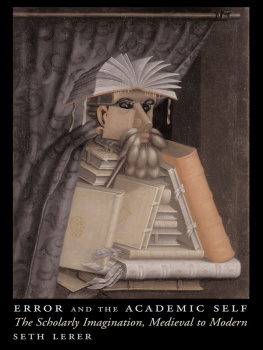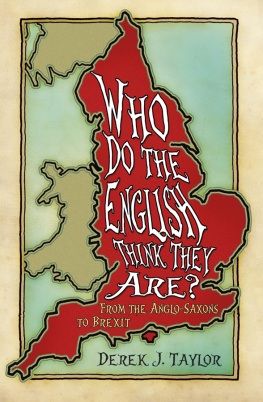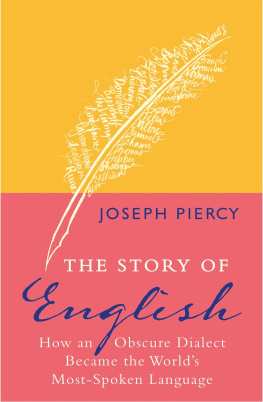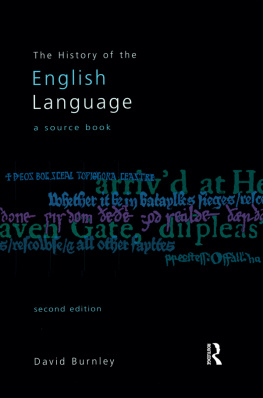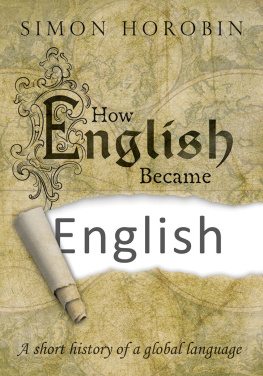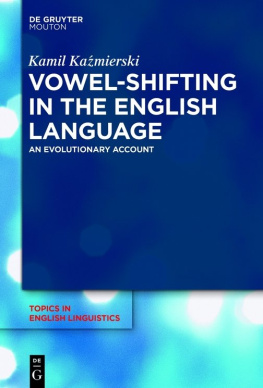Inventing English
paperback aided by a grant
Figure Foundation
homing the dialect of breath
INVENTING ENGLISH
A Portable History of the Language
Revised and Expanded Edition
Seth Lerer
COLUMBIA UNIVERSITY PRESS : NEW YORK
Columbia University Press
Publishers Since 1893
New York Chichester, West Sussex
cup.columbia.edu
Copyright 2007, 2015 Columbia University Press
All rights reserved
E-ISBN 978-0-231-54124-4
Library of Congress Cataloging-in-Publication Data
Lerer, Seth, 1955 author.
Inventing English : a portable history of the language / Seth Lerer.
Revised and Expanded Edition.
pages cm
Includes bibliographical references and index.
ISBN 978-0-231-17447-3 (pbk. : alk. paper) ISBN 978-0-231-54124-4 (e-book)
1. English languageHistory. 2. English languageEtymology. 3. English languageOld English, ca. 4501100. 4. English languageMiddle English, 11001500. 5. Linguistics. I. Title.
PE1075.L47 2015
420.9dc23
2015012065
A Columbia University Press E-book.
CUP would be pleased to hear about your reading experience with this e-book at .
Cover design: Linda Secondari
Cover illustration: Martha Lewis
References to websites (URLs) were accurate at the time of writing. Neither the author nor Columbia University Press is responsible for URLs that may have expired or changed since the manuscript was prepared.
CONTENTS
All texts from different periods of English appear here in original spellings. Texts from Old and Middle English use some letters not found elsewhere. These are
, | thorn, indicating a -th- sound |
, | edth, indicating a -th- sound |
, | aesch, indicating the vowel sound as in Modern American English, cat |
| yogh, indicating a sound like a y at the beginnings of words, and a sound like a gh in the middle of words |
| the abbreviation for and |
In addition to these letters, I will occasionally represent sounds by using the International Phonetic Alphabet. Each vowel and consonant sound in a language has a special symbol in this alphabet. The appendix to this book lists these symbols, the sounds they represent, and the ways in which speech sounds are described by linguists.
Words that are discussed as words, or words from other languages, appear in italics. Words that explain, translate, or define other words appear in quotations. Words that are transcribed into the International Phonetic Alphabet to record their pronunciation appear between /sl marks/.
At the end of this book are chapter-by-chapter lists of references and suggestions for further reading. In addition to the specific sources and editions I use, there are often many different editions availablein books and on line.
Throughout this book, I use the following abbreviations:
CHEL | The Cambridge History of the English Language, general editor Richard M. Hogg, 6 vols. (Cambridge: Cambridge University Press, 19922002). |
OED | The Oxford English Dictionary, originally edited by James A. H. Murray (Oxford: Oxford University Press, 18891928); Supplement, 1933; second edition, 1989. Online at http://dictionary.oed.com. |
Finally, unless otherwise noted, all translations from Old English, Middle English, and early Modern English, and from other languages, are my own.
When Inventing English first appeared in 2007, there had been no lack of scholarly and general books on the history of the English language. Over the past eight years, there have been more. The English language and its cultural history, literary variety, regional difference, and past, present, and possible future all still fascinate us. I am happy that Inventing English has participated in sustaining such a fascination. Along with my detailed, scholarly articles and my lecture series for The Great Courses, Inventing English has reached a wide community of students, teachers, and general readers.
This new edition emerges, therefore, not because the previous one had reached too small an audience, or because there still remains a lack of popular scholarship on its subject. It comes out, rather, in response to both its audiences reactions and its scholarly provocations. This book was not first written in haste, but it was written in heat. I sought not just to provide information but to tell a story and to tell it in a personal, felt way. As with all stories, there were slips and miscommunications. As with all books, there were errors. Reviewers, critics, and friends have been generous in their engagement with Inventing English. Some of that engagement has been broad and conceptual. Some has been technical and detailed. The world is full of better proofreaders than I am. Thus, a major goal in my revisions has been to correct, as much as possible, mistakes in this new edition. Typographical errors, lapses in judgment, and the occasional moment of just being plain wrongI have tried to fix these moments.
I have not, however, rewritten the text of the book. There have been recent scholarly discussions of some technical and historical issues that my book covers, and some of these discussions take a different line of interpretation or explicitly argue for a different position than I did. I have, therefore, updated the References and Further Reading section for certain chapters in order to direct my readers not just to supporting but to alternative arguments and evidence. Medievalist colleagues in particular may quarrel with some suppositions or some claims I offer here. For example, the status of the West-Saxon dialect of Old English as a standard has been hotly debated by Anglo-Saxonists who see a broader range of regional and literary forms at work in pre-Conquest writing. The status of Middle English has come under fresh review as well, both in its range of regional variations and in its differences between literary and lived usages. Some of the questions raised by recent scholarship include the following: Was the choice to write in English (as opposed to French or Latin) truly a matter of vernacular self-consciousness, with all the social and political impact that this phrase implies? Was the difference between the formal and informal forms of the second-person pronoun (you and thou, respectively) as rigorously observed in everyday speech as it may have been in crafted fiction and drama? Indeed, this latter question has extended to the age of Shakespeare and the King James Bible, as we recognize that literary language can sustain and manipulate particular forms of expression long after they have passed from daily use. These broader questions about grammar, dialect, vernacular, society, and politics have become vibrant topics for discussion, and my additions to the bibliography may direct readers to treatments far more nuanced than I have been able to achieve in this book.
Any study of the English language must rely on dictionaries, and the practice of lexicography has, over the past decade, seen a renewed energy. The Oxford English Dictionary is online and attentively updated. During the past decade, the OED has chosen a word of the yeara term that, in the mind of its editors, encapsulates a distinctive shift in sensibility or a particular relationship of language and habit. In 2013, that word was selfie, a coinage that emerged from smartphone portraiture but that has come to connote all that we may think of as distinctive of our social world in the second decade of the twenty-first century: that quality of technologically assisted narcissism that sets us at the center of a landscape.


